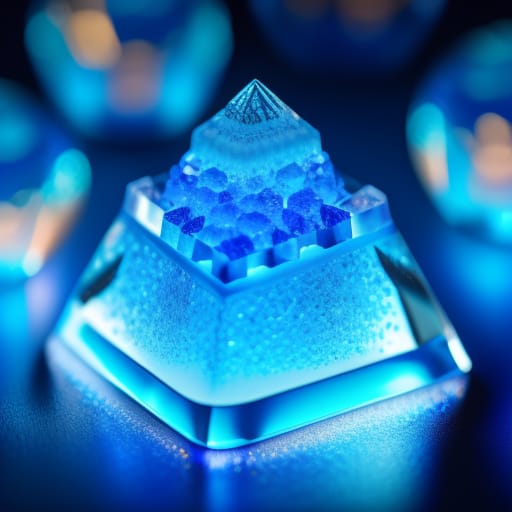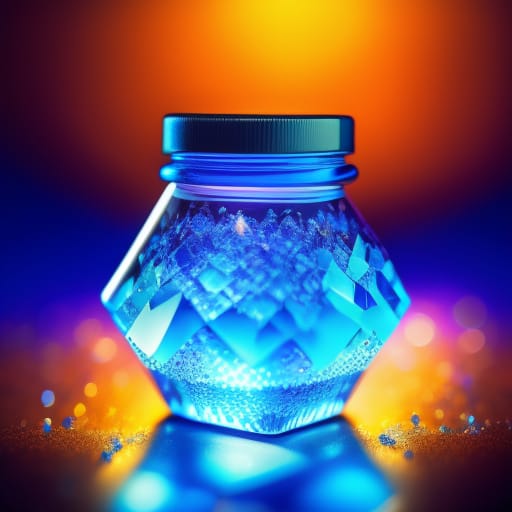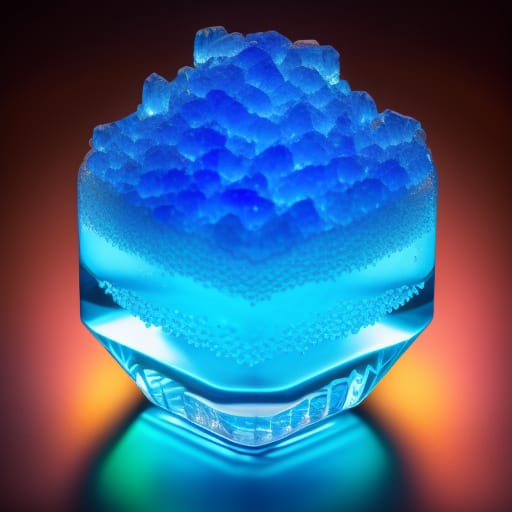Crystal growing experiments make excellent science fair projects for students of all ages. They allow young scientists to explore chemistry, physics, geology, and mineralogy in a hands-on way. With just a few affordable materials, students can grow beautiful crystals and learn about the science of crystal formation and structure along the way.
In this beginner’s guide, we’ll cover everything you need to know to create winning crystal growing science fair projects, including:
- The scientific method and how to develop a strong hypothesis
- Tips for recording data and observing crystal growth
- The chemistry and physics behind crystal formation
- Step-by-step instructions for basic crystal growing experiments
- Ideas for variables to test and how to display your results
- Safety precautions for grown crystals at home
So let’s get started with the magical science of growing crystals!

The Scientific Method for Science Fair Projects
All good science fair projects follow the scientific method. This involves:
- Making observations about something you want to learn more about
- Coming up with a hypothesis or question about what you observe
- Designing an experiment to test your hypothesis
- Systematically collecting and recording data
- Analyzing your data to see if your hypothesis was correct
- Drawing conclusions and sharing what you learned
When it comes to crytal growing experiments, you will first want to research how crystals form before developing a hypothesis. Your hypothesis should be a statement that predicts what will happen in your experiment.
Here are some example hypothesis for crystal growing experiments:
- If I use hotter water, then my crystals will grow bigger than crystals grown in colder water.
- If I use more borax powder, then my crystals will grow faster than crystals grown with less borax.
- If I use a crystal seed, then my crystals will be more uniform in size and shape compared to crystals grown without a seed.
Tips for Recording Crystal Growth Data
Careful observation and data collection are key parts of the scientific method. Here are some tips for recording data for your crystal growing experiment:
- Take photos at the start and end of your experiment to document crystal size and shape. Take photos from multiple angles.
- Make drawings of your crystals each day in a lab notebook, noting details like number of facets and color.
- Measure growth with a ruler and record length, width and height of crystals daily.
- Weigh crystals with a kitchen or scientific scale at the start and end of the experiment.
- Track timing – note the date each crystal first starts forming and record how many days it takes to fully grow.
- Write observations about crystal color, clarity, structure and more in your lab notebook.
- Control variables like temperature, light, humidity so all crystals grow under the same conditions.
Thorough data records will help you analyze your results and draw conclusions about which variables impact crystal growth.
The Chemistry Behind Crystal Formation
Crystals form through a chemical process called crystallization. This occurs when a crystalline solid forms from a solution, melt, vapor or gas. Here are some key chemical concepts:
- Solubility – how much of a substance will dissolve in a liquid solvent like water
- Concentration – the amount of solute dissolved in the solvent
- Supersaturation – when more solute is dissolved than the solvent can normally hold at a given temperature
- Nucleation – seeds or starting points for crystals to begin forming
- Lattice structure – the organized arrangement of molecules in a crystal
Growing crystals requires creating a supersaturated solution then allowing the excess solute to crystallize out slowly over time.

The Physics of Crystal Growth
In addition to chemistry, the physics of crystals involves concepts like:
- Crystalline structure – the repeating internal arrangement of atoms
- Polymorphism – ability for a substance to form different crystal structures
- Light refraction – how light bends through the crystal lattice
- Facets – the external plane surfaces of a crystal
The inherent atomic structure of substances determines their crystallization pattern. Changing factors like temperature can result in different crystalline shapes.
Step-by-Step: Growing Crystals with Borax
One of the easiest and most foolproof crystals to grow are borax crystals.
Supplies Needed
- Borax powder (available at grocery stores)
- Boiling water
- Glass jar or drinking glass
- Pipe cleaner or wooden skewer
- Pencil
- String
- Ruler
Step 1: Make a supersaturated borax solution
- Heat 1 cup of water until boiling
- Slowly stir in borax powder, 3 tablespoons at a time until no more dissolves. The water should be super saturated.
Step 2: Add the crystal seed
- Tie a pipe cleaner or wooden skewer to the end of string.
- Twist the string around a pencil and hang string in the jar, so seed is suspended in the center.
Step 3: Allow crystals to grow
- Set jar aside for 3-7 days, undisturbed.
- Watch as crystals form on the seed and grow larger each day.
Borax crystals growing on a suspended pipe cleaner seed
This easy experiment yields fast-growing crystals. Try varying the amount of borax, the temperature of water, or crystal seed shape toobserve the differences!
Variables to Test with Crystal Growing Experiments
The great thing about crystal experiments is there are many variables you can test:
Solute Concentration
- Does more or less solute (ex: borax, sugar, salt) affect crystal size and growth rate?
Solvent Temperature
- Do crystals grow faster in hot, warm or cold water?
Crystal Seeds
- How does seed size, shape or material affect crystallization?
Growing Conditions
- Does sunlight exposure vs. darkness impact crystal structure?
- Do crystals grow differently in humid vs dry conditions?
Impurities
- What happens if you add food coloring, glitter or other solutes to the solution?
Testing variables requires changing one thing at a time while keeping all other conditions the same. For example, grow one crystal in hot water and one in cold water, but keep the borax amount the same.
Record your observations and data to see which variable had the greatest effect!
Creative Ways to Display Crystal Experiments
Science fair projects should be visually engaging. Here are some ideas for displaying crystals:
- Mount individually on contrasting putty or fabric. Include labels.
- Arrange multiple crystals together in a decorative bowl.
- Build a terrarium or diorama with crystals clustered on rocks, sticks, pine cones etc.
- Attach crystals to floral wire stems to make a crystal bouquet or chandelier.
- Place crystals over a lightbox or shining flashlight to show off reflections.
- Photograph crystals through a microscope or magnifying glass.
Get creative with your crystal display so your hard work shines!
An example of a creative crystal experiment display
Safety Tips for Growing Crystals at Home
While growing crystals with household materials is generally safe, be sure to follow these precautions:
- Work under adult supervision.
- Wear safety goggles when handling hot liquids.
- Use oven mitts to pour hot water into jars.
- Wash hands after touching chemicals.
- Label solutions so others know they are part of an experiment.
- Store experiments out of reach of small children and pets.
- Dispose of chemicals properly when finished.

Top Crystal Growing Projects for Kids
Growing colorful, sparkly crystals with common household ingredients makes for ideal kid-friendly science experiments. Here are some of the best options:
Rock Candy Crystals
- Dissolve sugar in hot water to form a super saturated solution.
- Add a paper clip or candy shard as a seed crystal.
- Allow the sugar crystals to form on the seed over 7-10 days.
Epsom Salt Crystals
- Mix Epsom salt and very hot water until no more dissolves.
- Hang a small object in the water and let the cubic Epsom crystals slowly grow.
Alum Crystals
- Create a super saturated alum solution by dissolving powdered alum in hot water.
- Add a popsicle stick or tongue depressor to grow beautiful starburst-shaped alum crystals.
Sea Salt Crystals
- Heat water with lots of iodized sea salt until no more dissolves.
- Watch intricate crystals emerge as the mixture slowly cools.
Borax Snowflake Crystals
- Tie a pipe cleaner into a snowflake shape and dangle in borax supersaturated solution.
- The crystals that form mimic gorgeous frozen snowflakes.
So try out one of these kid-friendly crystal experiments for your next science fair!
Tips for Growing the Best Quality Crystals
Patience and care will yield the best crystal results. Here are some expert tips:
- Use high purity ingredients like laboratory grade chemicals. Table salt and borax have additives that distort crystal shape.
- Filter the solute solution through cheesecloth or coffee filter to remove debris.
- Choose glass, plastic or metal containers that are very clean. Imperfections can block crystal growth.
- Control temperature carefully during growth. Drastic temperature changes cause cracks and cloudiness.
- Protect growing crystals from vibration by placing on sturdy shelves away from activity.
- Hang seed strings and objects completely motionless for symmetrically formed crystals.
- Grow crystals slowly over weeks. Fast growth traps impurities deforming crystals.
With pristine conditions, you can grow nearly flawless specimens worthy of display!
Fun Advanced Crystal Projects
Once you master the basics, consider taking your crystal experiments to the next level:
- Grow enormous single crystals by slowly increasing super saturation over time in a temperature controlled environment.
- Crystallize biochemicals like proteins or enzymes using ultra-pure laboratory grade water and controlled pH. Use specialized seed substrates.
- Grow your own synthetic gemstones with solutions of metallic salts using advanced hydrothermal techniques.
- Create giant crystals through techniques like chemical vapor deposition where minerals deposit from gas onto seeds in enclosed chambers.
- Simulate extraterrestrial crystal formation by crystallizing chemicals in low gravity or extreme temperatures.
The possibilities are endless for taking crystal projects from basic science fair fun to advanced chemical engineering!
Ready to Grow Your Own Crystals?
We hope this beginner’s guide gives you the foundation to create stunning and educational crystal growing science experiments. Remember to follow the scientific method and keep thorough data records. And get creative with displaying your crystalline creations!
Crystal projects allow young scientists to explore the mysteries of chemistry, physics, geology and biology in a hands-on way. The magic happens when a shapeless solution transforms into an orderly lattice filled with color, reflections and geometric perfection.
So grab your borax and beakers and let the crystal growing fun begin!
What are the best crystal growing kits for beginners?
Many scientific companies sell beginner crystal growing kits that contain seeds and pre-made supersaturated solutions. This allows you to skip the chemistry and simply watch the crystals form over time. Popular starter kits to look for are the Crystal Science Crystal Growing Experiment Kit or the National Geographic Break Open Geodes Kit.
Is it safe to grow crystals with my kids?
Growing crystals from household ingredients like borax and sugar is generally safe with adult supervision. Be sure to follow safety precautions like wearing goggles when handling hot liquids and storing chemicals properly. Only work with child-safe substances and avoid crystal impurities that could be toxic.
How can I speed up the crystal growth process?
Crystals grow faster when the solution is more highly supersaturated. However, quick growth often traps more impurities leading to flawed crystals. For the best quality specimens, it’s best to have patience and allow crystals to form slowly over days or weeks. Controlling temperature also impacts growth rates.
What are some variables I can test with my crystal science experiment?
There are many different variables you can test to see their effect on crystal formation: amount of solute like sugar or borax, temperature of the water, size/shape of crystal seed, growing solutions in light vs. darkness, adding food coloring or glitter impurities, and more! Changing one variable at a time helps understand its specific impact on the crystals.
How can I display my crystals for a science fair project?
Some creative ways to display crystals are mounting them individually on cards, grouping together in bowls or jars, incorporating into a nature diorama with pine cones and sticks, suspending from pipe cleaners to make a crystal chandelier, placing them over a flashlight or LED lightbox to show refractions, or photographing them through a microscope to showcase details. Get creative with your crystal display!